
Bernard of Clairvaux, O. Cist., venerated as Saint Bernard, was an abbot, mystic, co-founder of the Knights Templar, and a major leader in the reform of the Benedictines through the nascent Cistercian Order.
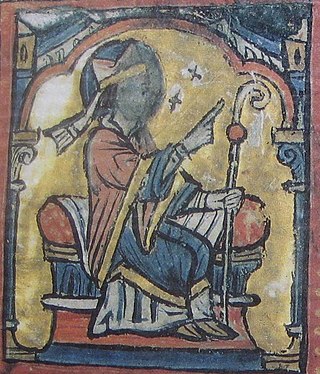
Pope Clement III, was the head of the Catholic Church and ruler of the Papal States from 19 December 1187 to his death in 1191. He ended the conflict between the Papacy and the city of Rome, by allowing the election of magistrates, which reinstalled the Papacy back in the city after a six year exile. Clement, faced with a deplete college of cardinals, created thirty-one cardinals over three years, the most since Hadrian IV. He died 20 March 1191 and was quickly replaced by Celestine III.

Pope Celestine III, was the head of the Catholic Church and ruler of the Papal States from 30 March or 10 April 1191 to his death in 1198. He had a tense relationship with several monarchs, including Emperor Henry VI, King Tancred of Sicily, and King Alfonso IX of León.
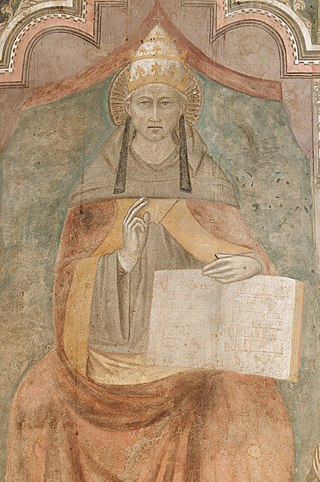
Pope Celestine V, born Pietro Angelerio, also known as Pietro da Morrone, Peter of Morrone, and Peter Celestine, was head of the Catholic Church and ruler of the Papal States for five months from 5 July to 13 December 1294, when he resigned. He was also a monk and hermit who founded the order of the Celestines as a branch of the Benedictine order.

Roger Bacon, also known by the scholastic accolade Doctor Mirabilis, was a polymath, a medieval English philosopher, scientist, theologian and Franciscan friar who placed considerable emphasis on the study of nature through empiricism. Roger Bacon is considered one of the greatest polymaths of the medieval period, he intertwined his Catholic faith and scientific thinking.

Year 1124 (MCXXIV) was a leap year starting on Tuesday of the Julian calendar, the 1124th year of the Common Era (CE) and Anno Domini (AD) designations, the 124th year of the 2nd millennium, the 24th year of the 12th century, and the 5th year of the 1120s decade.
Year 1294 (MCCXCIV) was a common year starting on Friday of the Julian calendar.
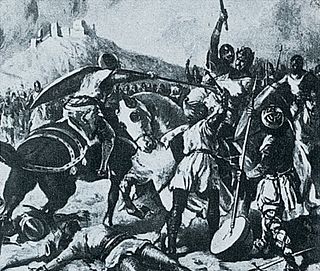
Year 1213 (MCCXIII) was a common year starting on Tuesday of the Julian calendar.

Year 1047 (MXLVII) was a common year starting on Thursday of the Julian calendar.

Year 1241 (MCCXLI) was a common year starting on Tuesday of the Julian calendar.
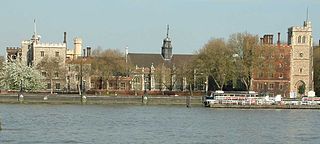
Boniface of Savoy was a medieval Bishop of Belley in Savoy and Archbishop of Canterbury in England. He was the son of Thomas, Count of Savoy and owed his initial ecclesiastical posts to his father. Other members of his family were also clergymen, and a brother succeeded his father as count. One niece Eleanor of Provence was married to King Henry III of England, and another was married to King Louis IX of France. It was Henry who secured Boniface's election as Archbishop, and throughout his tenure of that office, he spent much time on the continent. He clashed with his bishops, with his nephew-by-marriage, and with the papacy but managed to eliminate the archiepiscopal debt that he had inherited on taking office. During Simon de Montfort's struggle with King Henry, Boniface initially helped Montfort's cause but later supported the king. After his death in Savoy, his tomb became the object of a cult, and he was eventually beatified in 1839.

The late Middle Ages or late medieval period was the period of European history lasting from AD 1300 to 1500. The late Middle Ages followed the High Middle Ages and preceded the onset of the early modern period.

Scotland in the Middle Ages concerns the history of Scotland from the departure of the Romans to the adoption of major aspects of the Renaissance in the early sixteenth century.
Jocelin of Wells was a medieval Bishop of Bath. He was the brother of Hugh de Wells, who became Bishop of Lincoln. Jocelin became a canon of Wells Cathedral before 1200, and was elected bishop in 1206. During King John of England's dispute with Pope Innocent III, Jocelin at first remained with the king, but after the excommunication of John in late 1209, Jocelin went into exile. He returned to England in 1213, and was mentioned in Magna Carta in 1215.
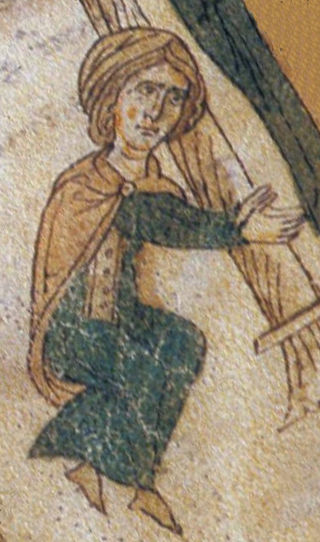
Sibylla of Acerra (1153–1205) was Queen of Sicily as the wife of King Tancred. After Tancred's death, she was regent in 1194 for their son, King William III. She was the sister of Count Richard of Acerra.
The 1241 papal election saw the election of Cardinal Goffredo da Castiglione as Pope Celestine IV. The election took place during the first of many protracted sede vacantes of the Middle Ages, and like many of them was characterized by disputes between popes and the Holy Roman Emperor. Specifically, the election took place during the war between Frederick II, Holy Roman Emperor and the Lombard League and deceased pontiff, Pope Gregory IX, with Italy divided between pro-Papal and pro-Imperial factions known as the Guelphs and Ghibellines.
Simon of Southwell was a medieval English canon lawyer and canon who became treasurer of the cathedral chapter of Lichfield Cathedral. He served in the household of Hubert Walter, who was Archbishop of Canterbury from 1193 to 1205. Pope Celestine III appointed Simon as a papal judge-delegate, and Simon also served Walter in Rome on two legal cases. A number of the glosses on a late-twelfth-century copy of Gratian's Decretum are ascribed to Simon.












